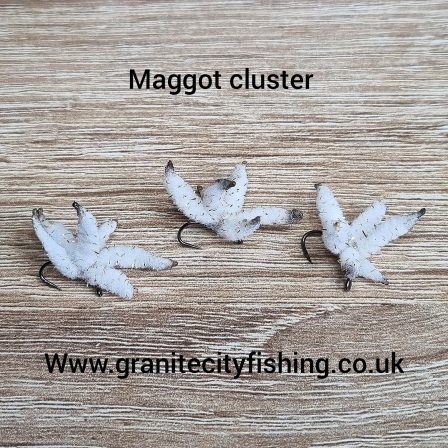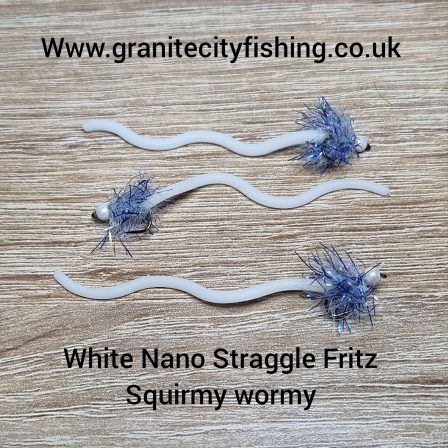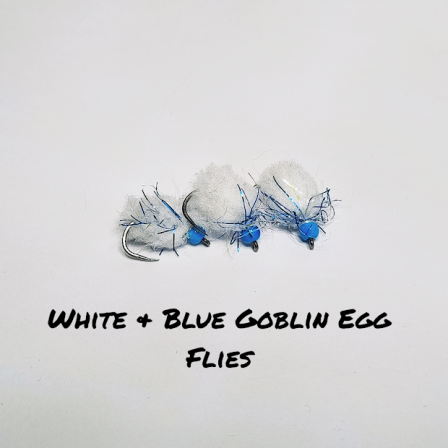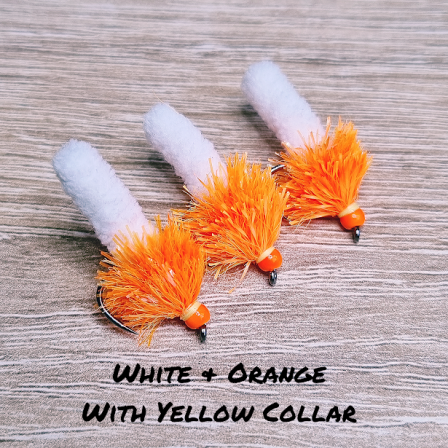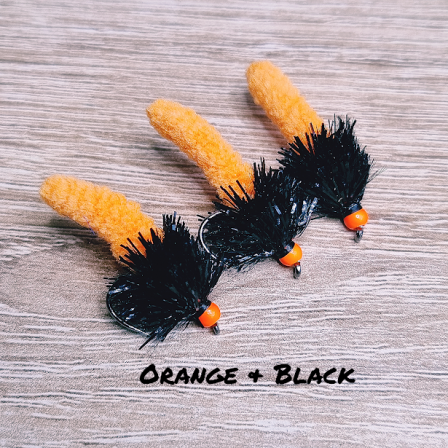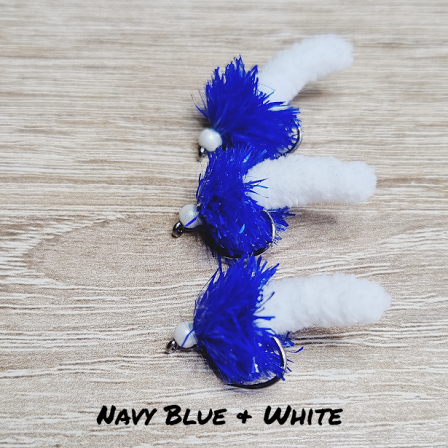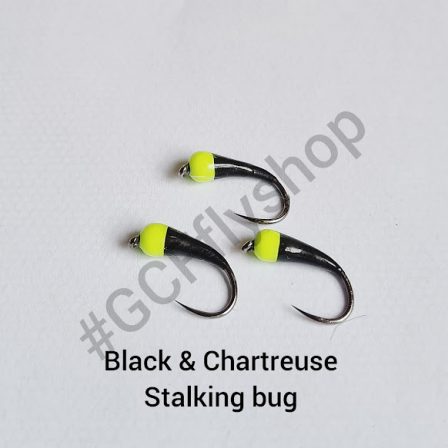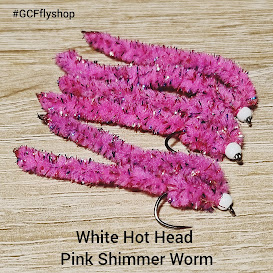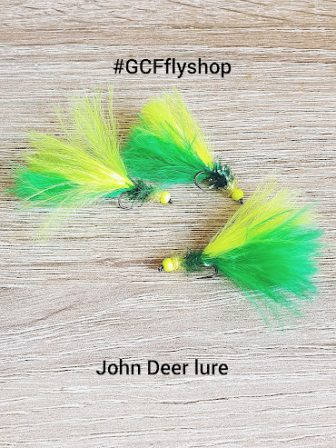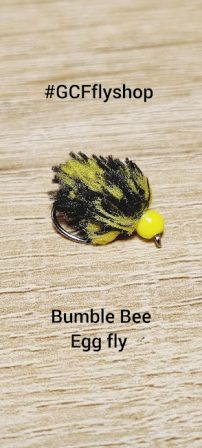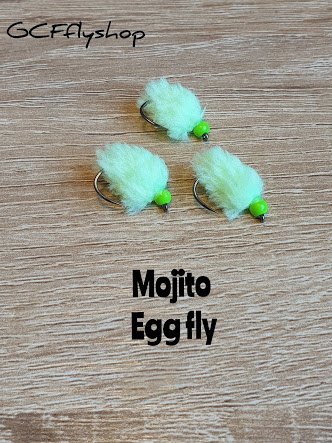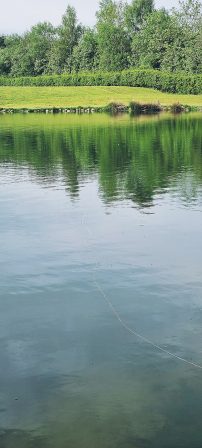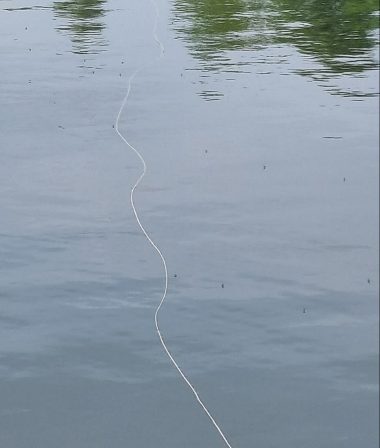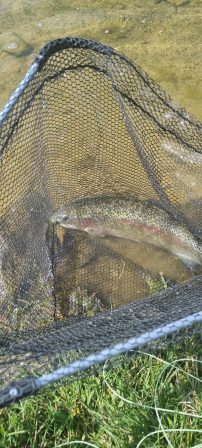Fishing a small body of water can throw up many situations where adapting to the conditions is key, and sometimes that means fishing the bung. It’s a method that is widely used and offers some extremely exciting sport when the fish favour a static-fished fly. It’s an ideal method for fishing buzzers, and more recently, in fact, lures, suspended at the optimum depth.
The picture below shows one of my own tied bung flies sitting proudly nearly a whole fly line length out.
This picture is the same as the one above, but I zoomed into it to show you the reason I was on the bung. Check out the amount of natural flies on the water. It did not matter what I used; it got no interest, but once I changed to the bung with an egg fly just about 2 feet down, I landed up with 29 to the net.
Bung fishing is also a great way for those of you who have less mobility to enjoy fly fishing again. As you cast a lot less, once you have casted out, you can have a chair with you and sit there holding your rod and watching the bung.
The only way to describe ‘the bung’ is as a float, a strike indicator. It’s designed to suspend a single or team of flies at a certain depth, allowing your fly to fish in the taking zone longer than when using a conventional sinking fly line. As is everything in fly fishing, the bung has its days and is extremely effective and often unmatchable when the fish switch onto it.
There are so many types of bungs/indicators on the market that I am not going to even try to list them, so the best way is to look at what others are using and ask. 99.9% of fly fishermen and women are only too happy to pass on their knowledge. My personal choice is a bung fly; these can be anything from a large dry fly to a big foam fly. Once again, it’s down to personal choice.
It may sound silly, but ensure you have an extremely buoyant indicator that’s capable of suspending your intended flies. There’s nothing worse than finding out your bung sinks under the weight of the flies beneath. The higher the indicator rides on the surface, the more visible it will be.
Have a selection of colours; black, orange, yellow, and white are by far the best, depending on the light. Carrying a range of colours will ensure you’re equipped for varying lighting throughout the day.
This might be a simple one, but don’t cast too far… Keeping sight of the bung is essential to hooking the fish; if you cast too far, you won’t see the subtle takes. Takes can be very gentle, so keep in contact with your bung and watch it like a hawk, as you have to be quick to hook them. When striking, don’t strike hard, as you are more likely to pull the hook out of the trout’s mouth. Just lift into the fish as if you were fishing a dry fly.
Perfectly hook on the nose Rainbow on the Bumble Bee egg fly.
One tip I think you all need to know is that when you keep in contact with your bung, you have a far less chance of deep hooking fish, as fishing static can increase this, so the sooner you tighten into the fish, the less chance you have of deep hooking.
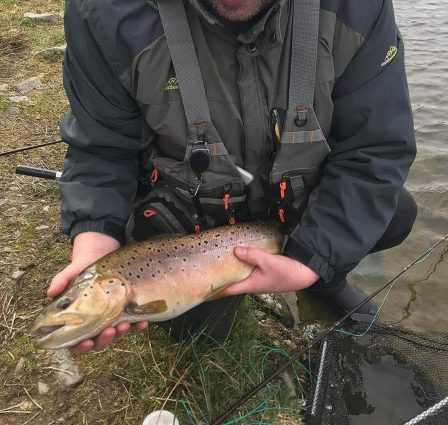
Strike indicators, or bungs, are hard to cast; they aren’t very aerodynamic, so a steeply tapered leader will aid in presentation as well as turnover.
The best flies to fish under the bung? Well, most would say buzzers, but more and more people like myself use any fly, even lures fished static, which are becoming popular and on their day can be deadly, but my personal favourite is the egg fly.
Below is a selection of GCFflies favourite bung flies, all of which are on sale in the website shop.
GCFflies must have bung flies.
